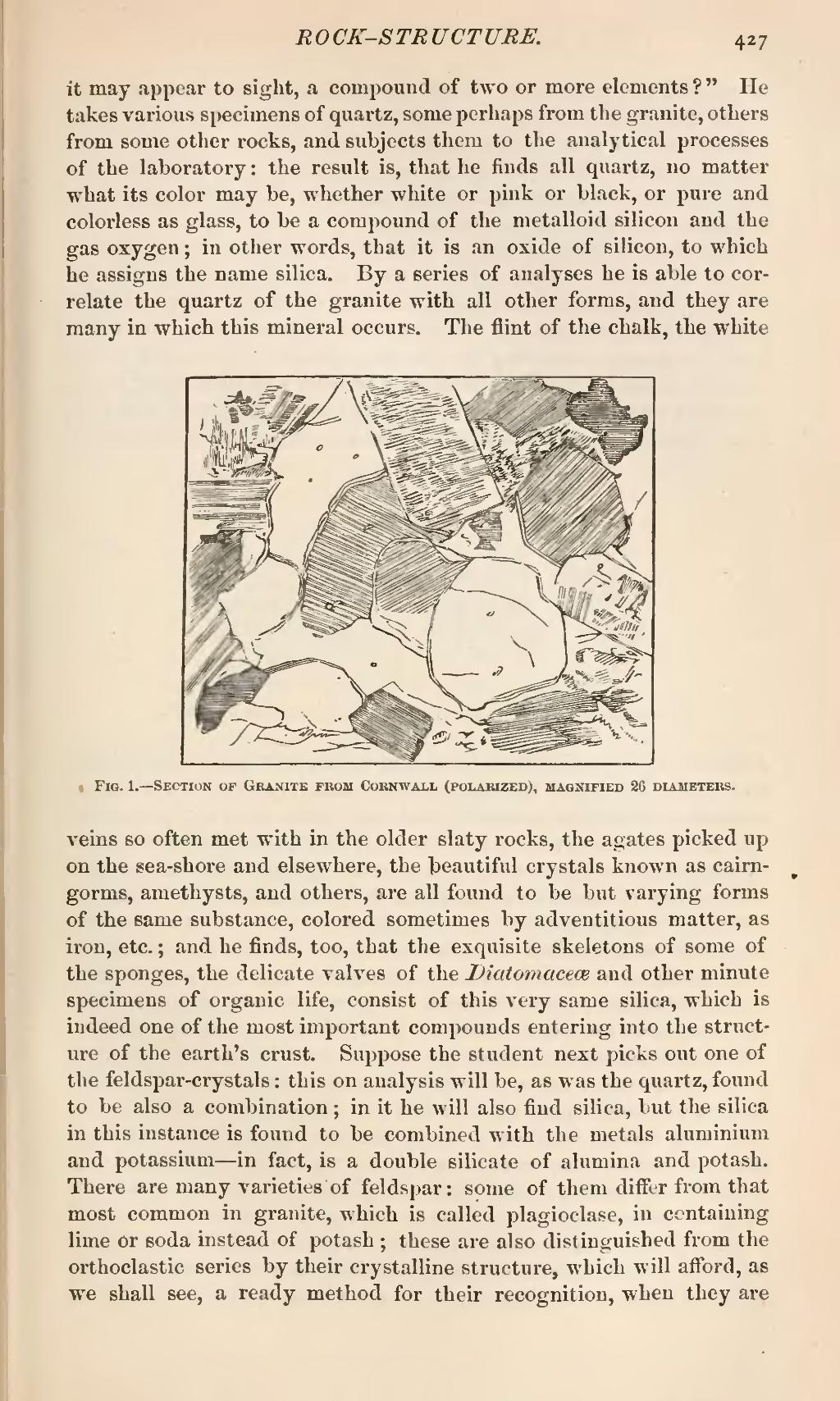it may appear to sight, a compound of two or more elements?" He takes various specimens of quartz, some perhaps from the granite, others from some other rocks, and subjects them to the analytical processes of the laboratory: the result is, that he finds all quartz, no matter what its color may be, whether white or pink or black, or pure and colorless as glass, to be a compound of the metalloid silicon and the gas oxygen; in other words, that it is an oxide of silicon, to which he assigns the name silica. By a series of analyses he is able to correlate the quartz of the granite with all other forms, and they are many in which this mineral occurs. The flint of the chalk, the white

Fig. 1.—Section of Granite from Cornwall (polarized), magnified 26 diameters.
veins so often met with in the older slaty rocks, the agates picked up on the sea-shore and elsewhere, the beautiful crystals known as cairngorms, amethysts, and others, are all found to be but varying forms of the same substance, colored sometimes by adventitious matter, as iron, etc.; and he finds, too, that the exquisite skeletons of some of the sponges, the delicate valves of the Diatomaceœ and other minute specimens of organic life, consist of this very same silica, which is indeed one of the most important compounds entering into the structure of the earth's crust. Suppose the student next picks out one of the feldspar-crystals: this on analysis will be, as was the quartz, found to be also a combination; in it he will also find silica, but the silica in this instance is found to be combined with the metals aluminium and potassium—in fact, is a double silicate of alumina and potash. There are many varieties of feldspar: some of them differ from that most common in granite, which is called plagioclase, in containing lime or soda instead of potash; these are also distinguished from the orthoclastic series by their crystalline structure, which will afford, as we shall see, a ready method for their recognition, when they are

